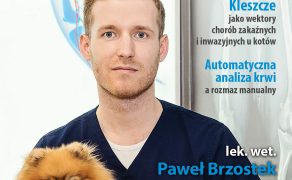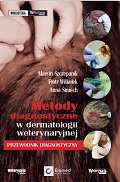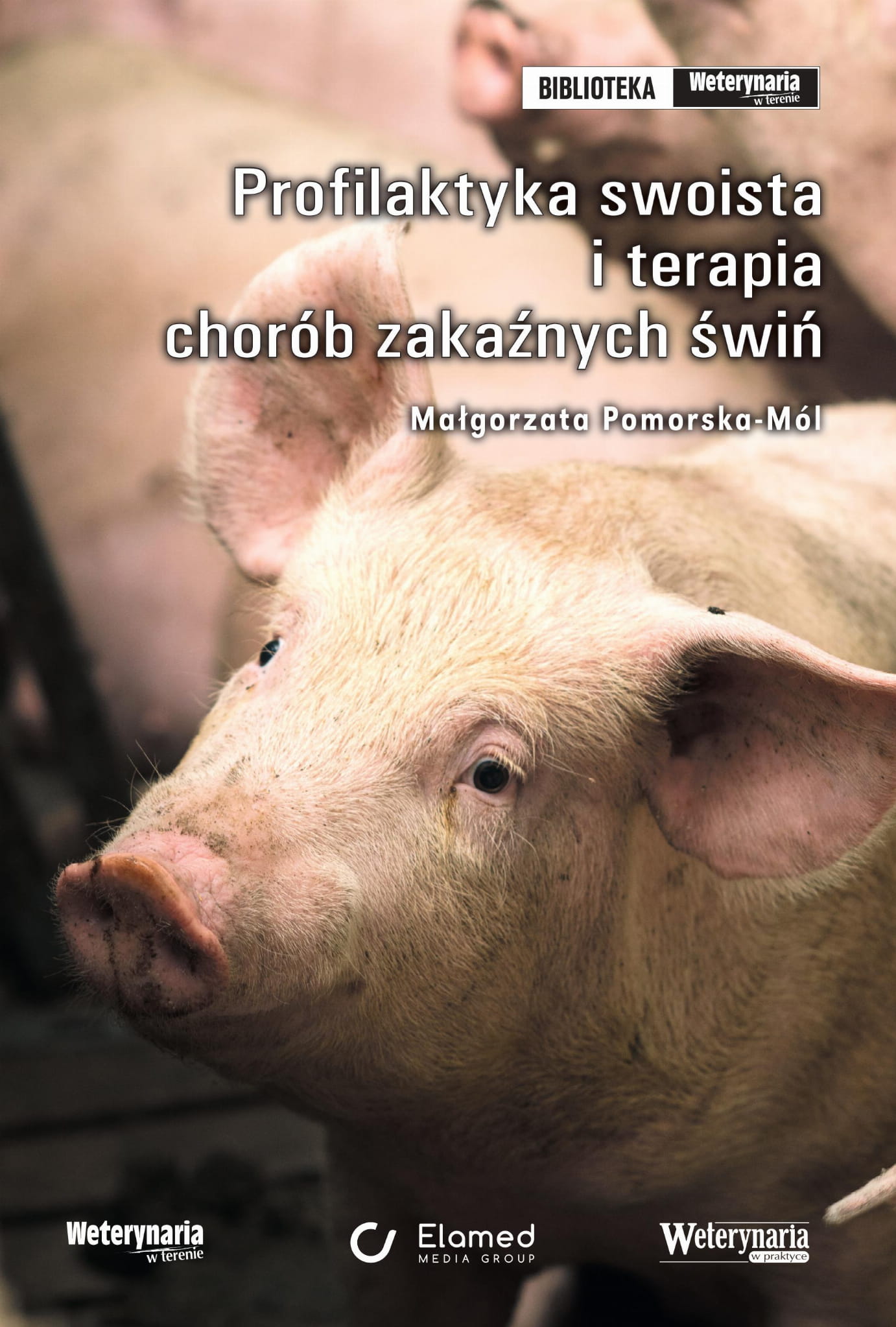Hemofilia typu A i B u psów
After the identification of the causative mutation in Chapel Hill, an identical mutation was found in a haemophilic mixed breed colony (originally two haemophilic miniature Schnauzers, four carrier female Schnauzer-Brittany Spaniels and a healthy Beagle) at the University of Queen, Canada. Haemophilic dogs showed dramatic reductions in plasma FVIII activity and FVIII antigen less than 10%. Southern Blot analysis indicated the presence of at least five copies of this sequence in the canine genome, one of these copies was located around the splice donor site of exon 22 and other copy within intron 22, and therefore, the authors suggested an intrachromosomal recombination event between two of these copies, which probably results in an intron 22 inversion (Hough et al., 2002).
Two point mutations have also been identified in the canine FVIII gene. A nonsense mutation (c.98G>A) was described in a haemophilic German Shepherd, which suffered from severe form of haemophilia A (FVIII activity <1%). Due to the fact that this nucleotide exchange results in a premature stop codon during the transcription, authors predicted that the short transcript would encode a truncated FVIII protein that would be rapidly degraded (Mischke et al., 2011A). The second point mutation (c.6217 T>C) was observed in a haemophilic Great Dane, which showed a severe form of haemophilia A and FVIII activity of 4%. The observed nucleotide exchange leads to a substitution of highly conserved tryptophan by arginine in C1 domain of protein resulting in a change in the structure of protein (Alcaraz et al., 2013).
Two insertions have been identified in exon 14 of the canine FVIII gene. The first insertion was described in haemophilic Havanese dogs, which had a FVIII activity of 10 and 15%. Sequence analysis of canine FVIII gene showed a short interspersed nuclear element after nucleotide 2675 of the FVIII cDNA, which contained several stop codons Authors suggested that the truncated FVIII protein of patients had a residual function that was in accordance with the phenotype (Mischke et al., 2011B).
Recently other insertion has been described in a haemophilic Poodle mix (FVIII activity of 5%). In this case, the identified insertion contained a short sequence of 5 base pairs followed by a polyA tail, and it was flanked by DNA duplication of 15 base pairs. Analysis of the insertion revealed a transcriptional frameshift and a premature stop codon at the beginning of the insertion, c.3217-3219, which suggested that this mutation probably results in an amino acids translation product that is shorter that the wild type (Alcaraz et al., 2013).
The mutations causing haemophilia B have been identified and characterize in five dog breeds and in mixed dogs (Tab. 1). The first identified mutation, c.1477G>A, was described in haemophilic mixed dogs from the Chapel Hill colony (originally Cairn Terrier and Beagle mixed breed) suffered from a severe form of haemophilia B with no detectable FIX in plasma. The identified point mutation leads to an amino acid substitution from glutamic acid to glycine resulting in several structural conflicts and a hydrophobic character disorder of the internal region of the FIX. These findings allowed authors to confirm that c.1477G>A is the causative mutation responsible for haemophilia B in these dogs (Evans et al., 1989A).
Another missense mutation, c.752G>A, was detected in haemophilic Rhodesian Ridgebacks. The dogs exhibited a severe form of haemophilia B and FIX activities <5%. Sequence analyses of the FIX gene of affected and carrier dogs revealed a G to A nucleotide exchange in exon 7 that results in a substitution of glycine to glutamic acid in the catalytic domain of the protein. Due to the difference in the side and charge between the changed amino acid and the wild type amino acid, authors suggested that the altered amino acid likely leads to a change in conformation of the pocket-shaped active site of the trypsin domain (Mischke et al., 2011C).
Insertions have also been described as causative mutations responsible for haemophilia B in dogs. The first insertion was described in Airedale Terrier dogs. Patients showed typical signs of severe haemophilia B and FIX activity <1%. A 5 kb insertion after nucleotide 1471 in exon 8 was detected. This insertion disturbed the splicing of the FIX mRNA resulting in a truncated mature mRNA, which lacks more than 150 bp of exon 8 and most of the 3’ UTR, and encodes an abnormal sequence including a stop codon. As the catalytic domain is encoded by exon 8, a possible disturbance of the binding site to FX was suggested (Gu et al., 1999).
In addition, a large insertion mutation in intron 5 was reported in five generations of German Wirehaired Pointers. Haemophilic dogs had a mild to moderate form of haemophilia B with a FIX activity of about 5%. Sequence analyses of introns revealed a 1.5 kb insertion in intron 5 of the FIX gene, which contained a 5’ truncated canine LINE 1 and a long polyA at its 3’ end, both flanked by a 15 bp repeated sequence. As LINE 1 intronic insertions have been related with aberrant splicing and decreased gene expression levels, the detected canine mutation was suggested to be the causative FIX mutation in German Wirehaired Pointers (Brooks et al., 2003).
In contrast to canine haemophilia A, some deletions have been detected in the canine FIX gene. A partial and a gross deletion in exon 8 of the canine FIX gene were identified in a haemophilic Airedale Terrier and a haemophilic Labrador Retriever, respectively, at the University of Cornell. Affected dogs suffered from a severe form of haemophilia B (FIX antigen undetectable and FIX activity of less than 1%) (Sugahara et al., 1996).
In addition, a second deletion has been described in a Labrador Retriever. FIX activities for affected dog was 1%. In this case, genetic analysis of canine FIX gene revealed a complete deletion of the FIX gene. This finding implies several sporadic mutations in the Labrador Retriever breed as a cause for the same disease (Brooks et al., 1997). A partial gene deletion was described in Pit Bull Terrier mix dogs, which suffered from a severe form of haemophilia B (FIX activity <1%).
Sequencing of exons and introns of the FIX gene showed a partial gene deletion from exon 1 to exon 6, which results in the complete absence of FIX mRNA (Gu et al., 1999). Finally, a five base pairs deletion at nucleotides 772-776 in combination with a C to T transition at nucleotide 777 was identified in haemophilic Lhasa Apsos. Studied animals suffered from a severe form of haemophilia B (plasma FIX antigen level of less than 1% of normal canine plasma). This mutation leads to a frameshift during the translation and to a premature stop codon at amino acid residue 146. Authors concluded that the truncated protein lacks the entire activation peptide and the catalytic domain; therefore, it should not show any enzymatic activity (Mauser et al., 1996).
Mogą zainteresować Cię również
Znajdź swoją kategorię
2609 praktycznych artykułów - 324 ekspertów - 22 kategorii tematycznych
Weterynaria w Terenie

Praktyczne aspekty diagnostyki laboratoryjnej chorób świń
Strategia DIVA Kolejnym problemem jest różnicowanie serologiczne w przypadku wyniku pozytywnego, czy świnie były szczepione przeciw określonym chorobom lub czy są bezobjawowymi nosicielami chorobotwórczego wirusa. W tym celu opracowane zostały specjalne testy, które umożliwiają odróżnienie przeciwciał wywołanych przez wirus szczepionkowy specjalnie w tym celu genetycznie modyfikowany od przeciwciał wytworzonych pod wpływem wirusa zjadliwego. Powyższe określane […]

Podkliniczny niedobór wapnia i jego wpływ na wyniki rutynowych badań laboratoryjnych w różnych okresach laktacji u krów mlecznych
Problemy związane z interpretacją wyników badań Przynależność poszczególnych szczepów App do określonego serotypu dokonuje się na podstawie analizy składu polisacharydu otoczki. Serotypy od 1 do 12 opisuje się jako App biotypu I, natomiast serotypy 13 i 14 – jako biotyp II. Niektóre szczepy europejskie – serotypy: 2, 4, 7 i 9 – mogą być również […]

Praktyczne aspekty diagnostyki laboratoryjnej chorób świń
Strategia DIVA Kolejnym problemem jest różnicowanie serologiczne w przypadku wyniku pozytywnego, czy świnie były szczepione przeciw określonym chorobom lub czy są bezobjawowymi nosicielami chorobotwórczego wirusa. W tym celu opracowane zostały specjalne testy, które umożliwiają odróżnienie przeciwciał wywołanych przez wirus szczepionkowy specjalnie w tym celu genetycznie modyfikowany od przeciwciał wytworzonych pod wpływem wirusa zjadliwego. Powyższe określane […]

Wprowadzenie do stomatologii koni
Tarnikowanie zębów Usuwanie przerostów szkliwa zębów policzkowych żuchwy oraz szczęki rozpoczynamy od przyłożenia głowicy roboczej pod kątem 45°, odpowiednio bocznie w przypadku łuku zębowego szczęki oraz przyśrodkowo w przypadku łuku zębowego żuchwy. Kąt przyłożenia głowicy roboczej tarnika może zmieniać się od pionowego do poziomego. Wszystko to w celu uzyskania prawidłowej powierzchni, która nie będzie stanowiła […]

Wskazówki na wypadek widocznego niepowodzenia terapii antybiotykowej. Kryteria skutecznej terapii oraz kluczowe pytania jako 5 kroków drzewa analitycznego
Czynniki powiązane z użyciem antybiotyku w terapii: Czy wybór antybiotyku opierał się na badaniach klinicznych i dodatkowych (diagnoza, antybiogram)? Sprawdź odpowiedź na pytanie 3. Farmakokinetyka/farmakodynamika wybranego antybiotyku? Koncentracja i czas działania antybiotyku w zakażonej tkance a efektywność w stosunku do czynnika bakteryjnego wywołującego chorobę (spektrum działania antybiotyku, wrażliwość z antybiogramu – odpowiedzi na pytanie 3.). […]

Czarno na białym – mastitis okiem praktyka – rozmowa z dr. n. wet. Sebastianem Smulskim
Rozmowa z dr. n. wet. Sebastianem Smulskim, pracownikiem Uniwersytetu Przyrodniczego w Poznaniu, specjalistą w dziedzinie profilaktyki i leczenia mastitis u krów, który w swoich badaniach zgłębia tematykę zapalenia gruczołu mlekowego u bydła, zarówno w aspekcie naukowym, jak i praktycznym. Większość zapaleń gruczołu mlekowego ma etiologię bakteryjną. Dlaczego, pomimo rozwoju mikrobiologii, medycyny weterynaryjnej i prowadzonych badań, […]

XVIII FORUM ZOOTECHNICZNO-WETERYNARYJNE: NOWE HORYZONTY W ROZRODZIE ZWIERZĄT
Na Uniwersytecie Przyrodniczym w Poznaniu w dniach 18-19 kwietnia br. odbyło się XVIII Forum Zootechniczno-Weterynaryjne pod hasłem „Rozród zwierząt w dobie selekcji genomowej”. To wydarzenie zgromadziło liczne grono lekarzy weterynarii oraz hodowców, by omówić najnowsze osiągnięcia w dziedzinie hodowli i rozrodu zwierząt. Organizacja Forum była wspólnym przedsięwzięciem Poznańskiego Koła Polskiego Towarzystwa Zootechnicznego, Wielkopolskiego Oddziału Polskiego […]





























































